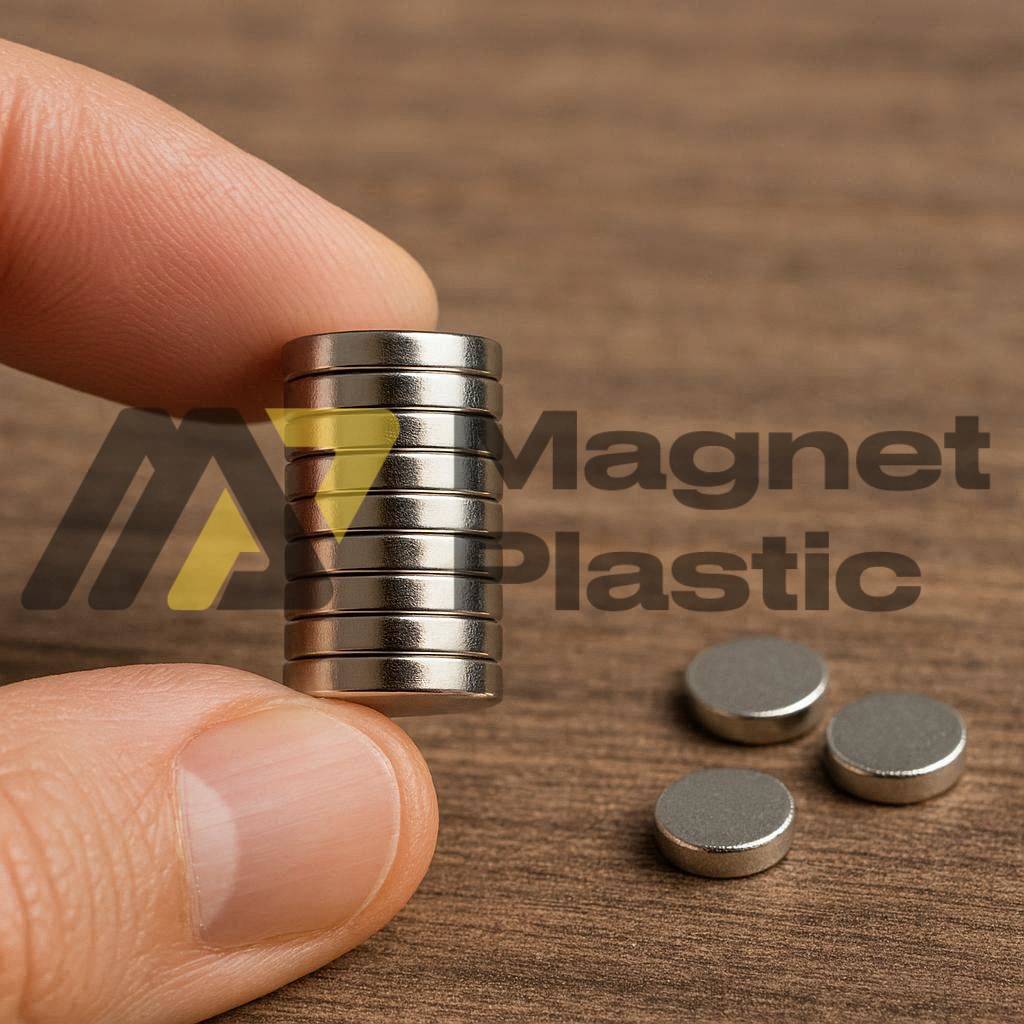Neodymium Magnets: Miniature Magnetic Power
Neodymium magnets, also known as rare-earth magnets, represent one of the most significant breakthroughs in modern magnetism. Their extraordinary magnetic strength, combined with a surprisingly compact size, makes them essential components in a wide range of industrial, technological, and domestic applications. Thanks to their unique composition and exceptional properties, these magnets have transformed the design and manufacture of devices across nearly every sector.
What Are Neodymium Magnets?
Neodymium magnets are primarily made from an alloy of neodymium (Nd), iron (Fe), and boron (B), known as NdFeB. This combination produces extremely high magnetic remanence, meaning they can generate very strong magnetic fields even in small sizes. Compared to traditional magnets, such as ferrite or alnico, neodymium magnets stand out for their immense power in compact proportions, making them ideal for devices where every millimeter counts.
Key Features
Neodymium magnets possess several qualities that explain their widespread use:
High magnetic strength:
They can hold several times their own weight, and in some industrial formats, even thousands of times more.
Small size, great power:
Their high magnetic density makes them perfect for compact devices such as speakers, miniature motors, or sensors.
Fragility:
Despite their strength, they are brittle and can chip or break if struck.
Corrosion sensitivity:
The NdFeB alloy is prone to oxidation, which is why most magnets are coated with nickel, zinc, or epoxy.
Limited temperature range:
Depending on the grade, they function optimally between 80–200°C. Higher temperatures can partially or completely demagnetize them.
Applications of Neodymium Magnets
Thanks to their combination of power and size, neodymium magnets are indispensable in numerous sectors:
1. Electronics and Technology
In the tech industry, they are essential for modern devices. They are used in hard drives, speakers, headphones, microphones, and precision electric motors. They also play a key role in renewable energy generators, such as wind turbines, and in electric vehicle motors, enhancing energy efficiency.
2. Medicine and Healthcare
In medicine, neodymium magnets are used in MRI machines, which provide detailed internal images of the human body non-invasively. They are also used in specialized surgical instruments and diagnostic devices.
3. Industry and Automation
In industrial applications, they are used for magnetic material separation, component fixation without adhesives, and high-precision magnetic tools. Their power also enables advanced technologies, such as magnetic levitation systems used in high-speed Maglev trains.
4. Domestic and DIY Use
At home, these magnets are used in door closures, tool holders, DIY projects, and science experiments. Their strength and compact size make them highly practical and versatile.
Conclusion
Neodymium magnets represent one of the most significant advancements in modern magnetic engineering. Small, lightweight, and exceptionally powerful, they have become indispensable across technology, medicine, industry, and home applications. Their versatility, efficiency, and ability to enhance device performance make them a crucial element in today’s and tomorrow’s technological innovation.
